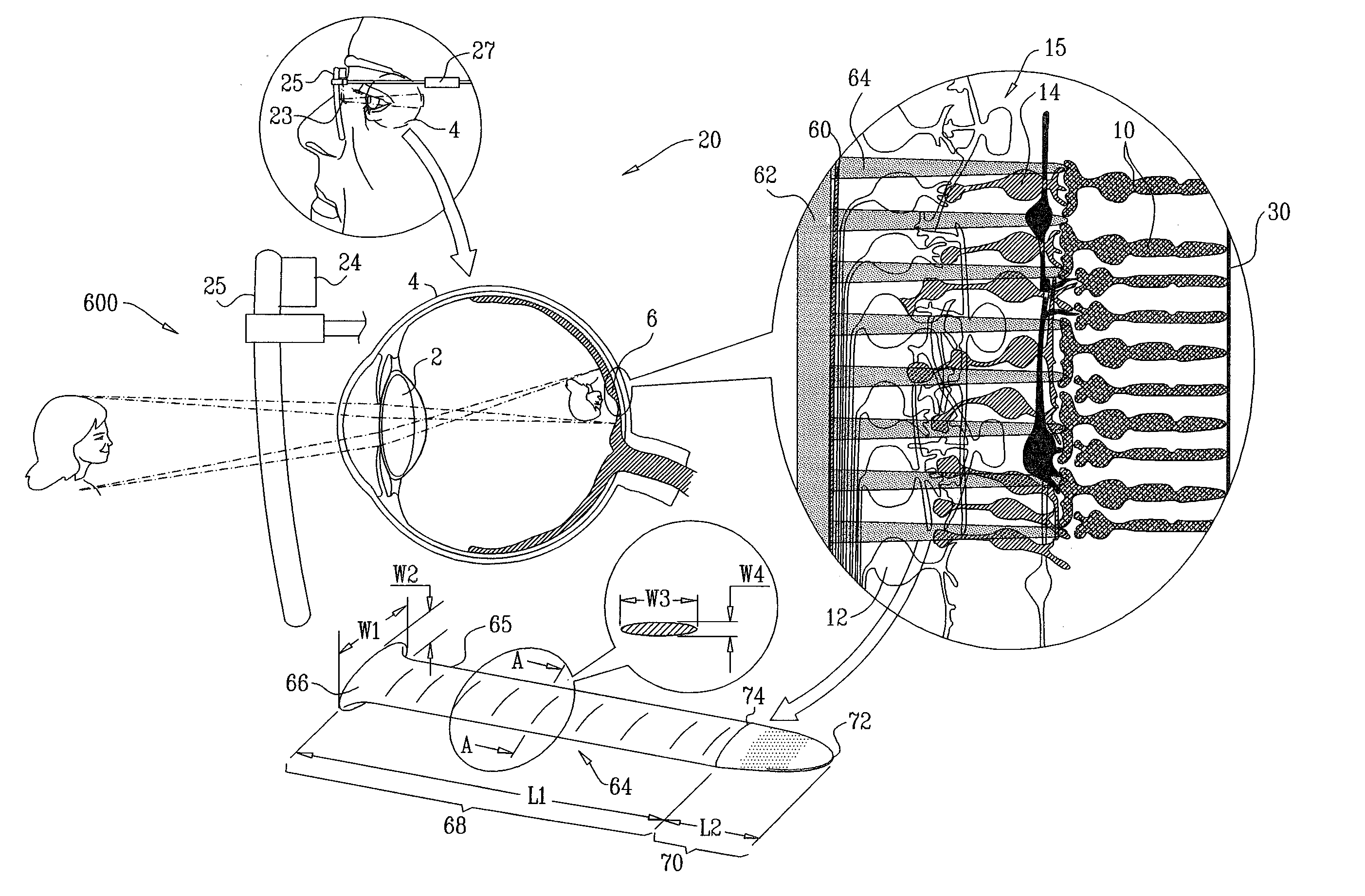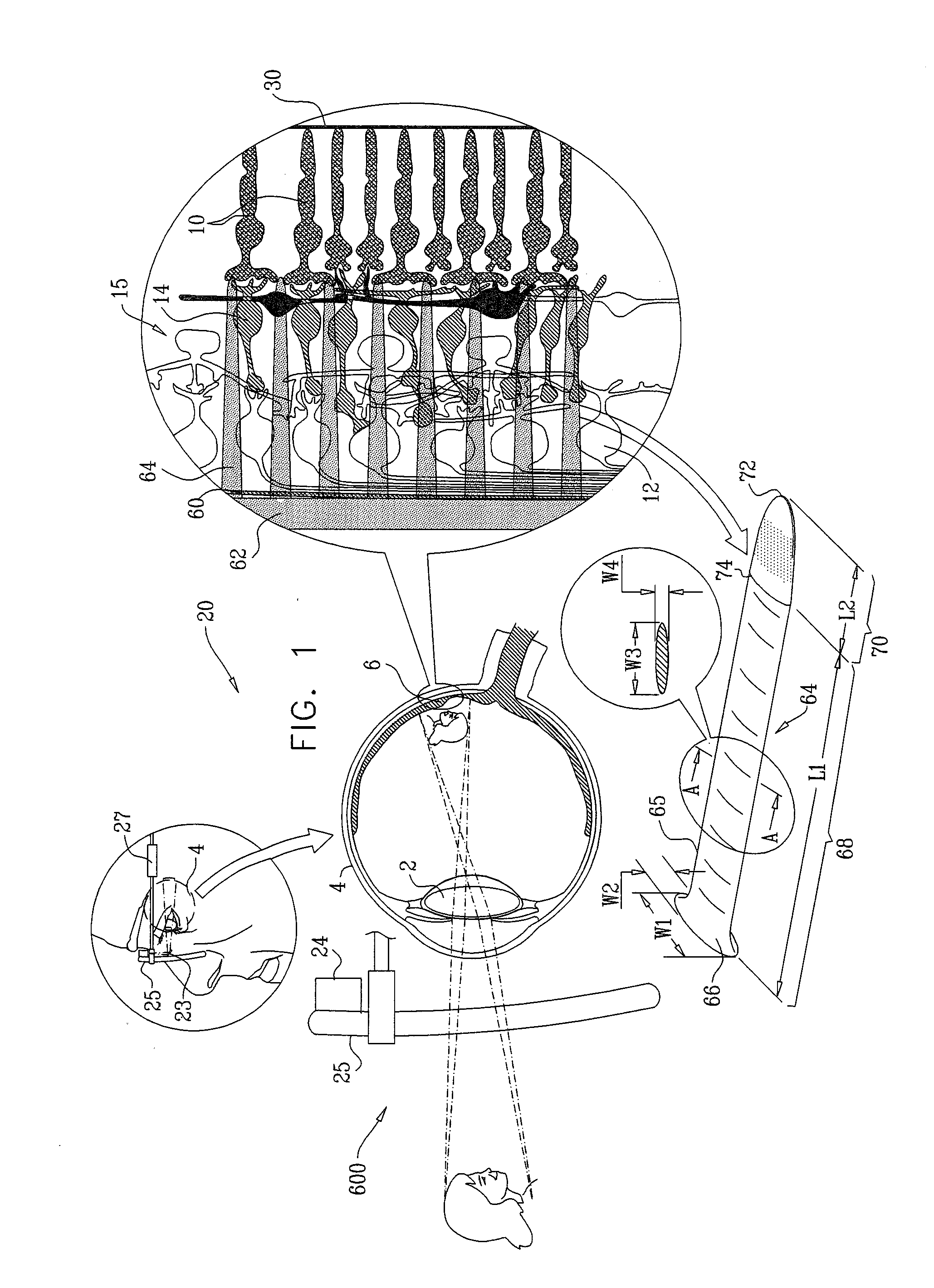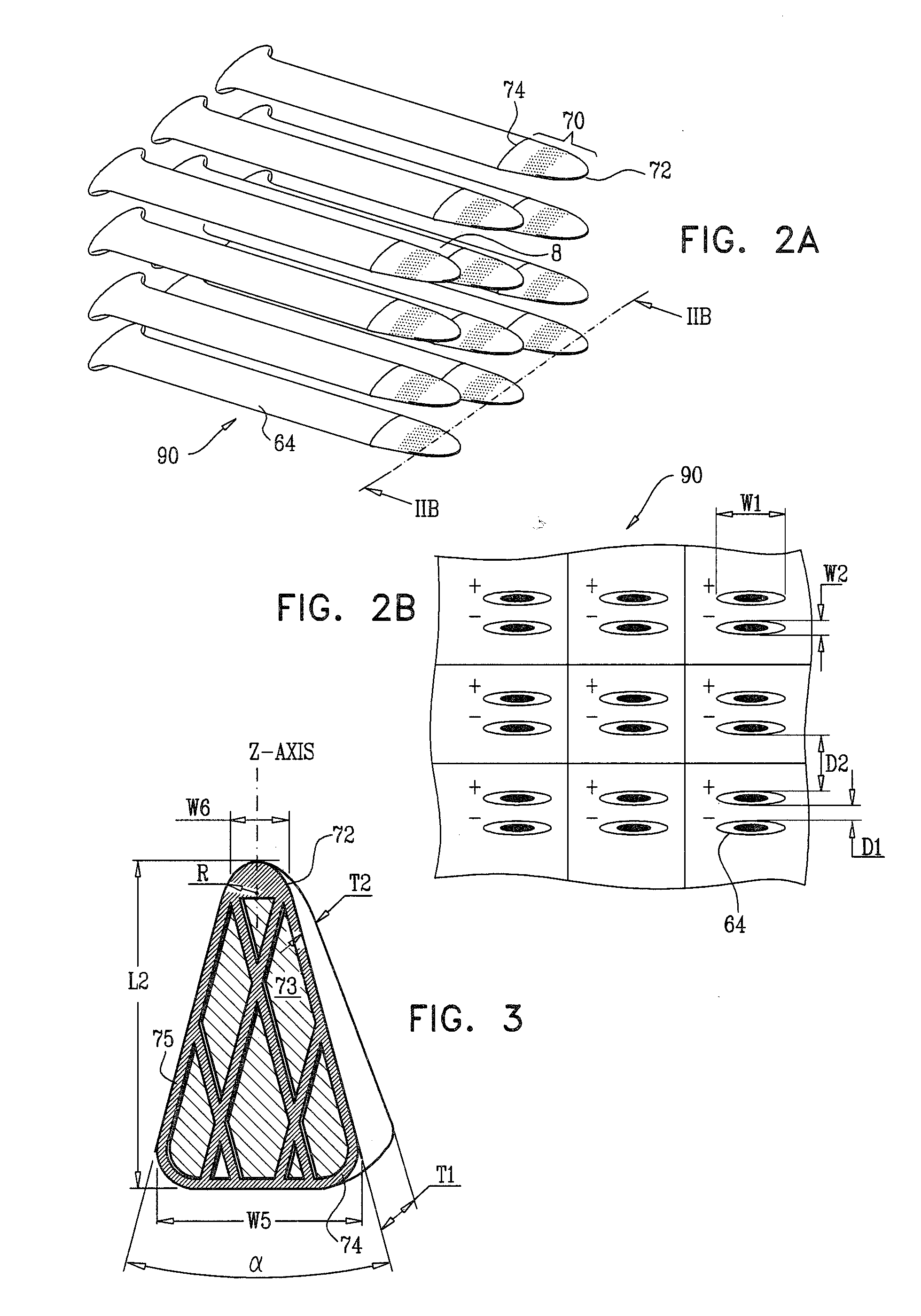Retinal prosthesis techniques
a technology of retinal prosthesis and electrodes, applied in the field of implantable medical devices, can solve the problems of retinal malfunction, blindness and visual impairment, and achieve the effects of improving cell-electrode coupling, increasing stimulation, and enhancing retinal stimulation
- Summary
- Abstract
- Description
- Claims
- Application Information
AI Technical Summary
Benefits of technology
Problems solved by technology
Method used
Image
Examples
Embodiment Construction
[0001]Some applications of the invention relate generally to implantable medical devices and more specifically to a retinal prosthesis.
BACKGROUND
[0002]Retinal malfunction, due to degenerative retinal diseases, is a leading cause of blindness and visual impairment. Implantation of a retinal prosthesis is a technology for restoring some useful vision in individuals suffering from retinal-related blindness.
[0003]The retina is a multi-layered light-sensitive structure that lines the posterior, inner part of the eye. The retina contains photoreceptor cells, for example rods and cones, which capture light and convert light signals into neural signals transmitted through the optic nerve to the brain. Rods are responsible for light sensitive, low resolution black and white vision, whereas cones are responsible for high resolution color vision. Most cones lie in the fovea, which defines the center of the retina. A bipolar cell layer exists between the photoreceptors and ganglion cells of the...
PUM
 Login to View More
Login to View More Abstract
Description
Claims
Application Information
 Login to View More
Login to View More - R&D
- Intellectual Property
- Life Sciences
- Materials
- Tech Scout
- Unparalleled Data Quality
- Higher Quality Content
- 60% Fewer Hallucinations
Browse by: Latest US Patents, China's latest patents, Technical Efficacy Thesaurus, Application Domain, Technology Topic, Popular Technical Reports.
© 2025 PatSnap. All rights reserved.Legal|Privacy policy|Modern Slavery Act Transparency Statement|Sitemap|About US| Contact US: help@patsnap.com



